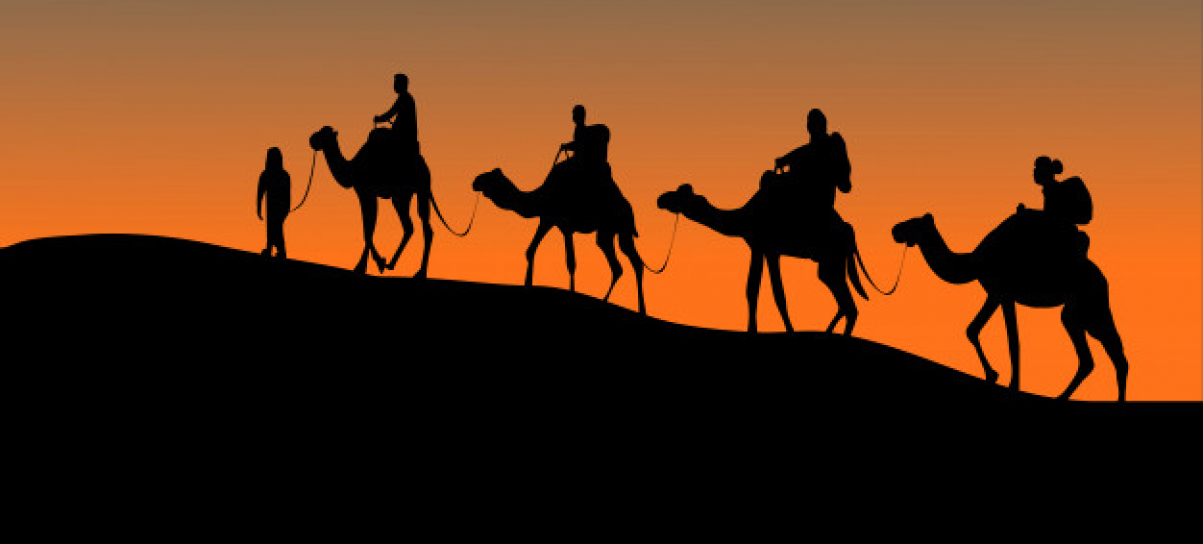Seven Myths of the Great Silk Road
Before I came to Uzbekistan in 1997 as a Peace Corps Volunteer, I knew very little about the country or, in fact, the entire region. Since it was the early days of the internet, there wasn't as much information available like there is today. So, this meant that I had to hustle down to the library to get all the books I could find and read as much as I could. It goes without saying that it didn't take long for me to give myself a tremendous boost of knowledge in the region’s geography, history, demographics, and politics.
Before I got to the library, I had heard about the Great Silk Road and the important role it played in the world’s nascent economic development. Stretching from China to Europe, this network of roads brought economic prosperity to the many villages, towns, and cities where it reached. But not only were goods exchanged between traders. Ideas, philosophies, innovations, and religions were exchanged, too.
Over the centuries, the Great Silk Road lost its dominance over the world’s economy due to political instability, disease, and improvements to maritime navigation. Since then, misunderstandings and misconceptions have replaced what role this network played in the world's history. As a primer, I’d like to introduce you to seven myths that have followed the Great Silk Road over the centuries since its demise.
Myth #1: The Great Silk Road was a single stretch of road.
This is a very common misunderstanding that many people fall victim. While the general direction of it was east-west, there were many tributaries that ran north and south, too. One of the most famous routes that still exist today is the Karakoram Highway that stretches from western China to Pakistan. Furthermore, some modern scholars have suggested that there were maritime routes that could be considered a part of the Great Silk Road, too!
Myth #2: It is called the Great Silk Road because silk was the only commodity that was transported to Europe.
While silk was the chief commodity, there were other products that interested westerners, too. They included: satin, musk and other perfumes, spices, medicines, jewels, glassware, slaves, and even rhubarb. The east was fascinated with gold, silver, cosmetics, amber, and ceramics. As I mentioned earlier, ideas, innovations, and religions traveled in both directions.

Myth #3: The Great Silk Road is only about 2,000 years old.
While the Road is at least 2,000 years old, recent archaeological investigations have shown that it was being used in pre-historic times. Some scholars have suggested that the road could be 3,000 years old!
Myth #4: Trading along the Great Silk Road declined because it was too dangerous.
Trading along the Great Silk Road was always dangerous. Not only did the caravans have to deal with the harsh climate of the desert, it had to protect itself from thieves and wild animals. What really brought the decline of its use was the advent of improved navigational tools on the seas. Shipping was considered a much safer option, but it was faster, too.
Myth #5: Chinese mummies have been recently discovered along the Great Silk Road.
In 1934 in Loulan (Xinjiang Uyghur Autonomous Region) Folke Bergman first explored the burial grounds, but it was “rediscovered” in 2000 by the Xinjiang Archaeological Institute. At this site, archaeologists uncovered the mummified remains of people who had Caucasian features.
Myth #6: The silk trade between the east and west started only after the Great Silk Road was opened.
In those days, there really wasn’t an opening ceremony to herald the beginning of a new international economic cooperative event. What probably happened is that it came into being piecemeal, meaning that a particular region’s government would be able to provide enough security for a stretch of the road to allow trade to flourish. As neighboring regions saw the economic benefits of a secured trade route, they would take necessary measures to secure their section until the road lost its effectiveness in the 15th century. Further evidence of trade taking place before the Great Silk Road “opened” was the discovery of a female, Egyptian mummy in Thebes wearing silk; she was dated in 1070 B.C. and probably is the earliest evidence of silk in the west.

Myth #7: Marco Polo (1254 – 1324) was the first westerner to travel the Great Silk Road and visit the Mongolian Empire.
Marco Polo did travel along the Great Silk Road and yes, he did visit the Mongolian Empire, but most likely he was not the first westerner to travel on it. While there were many westerners who made the trip before Polo, he was the first to leave an account of his travels in a book. So what lesson can we derive from Myth #7? Keep a journal of your travels when you come visit us so your ancestors can read about it - like Marco Polo did!

Posted by Greg Stephenson
We recommend to see more:
Follow us on
Sign up for our newsletters
Find our latest discounted tours, updated itineraries and latest news about the region



